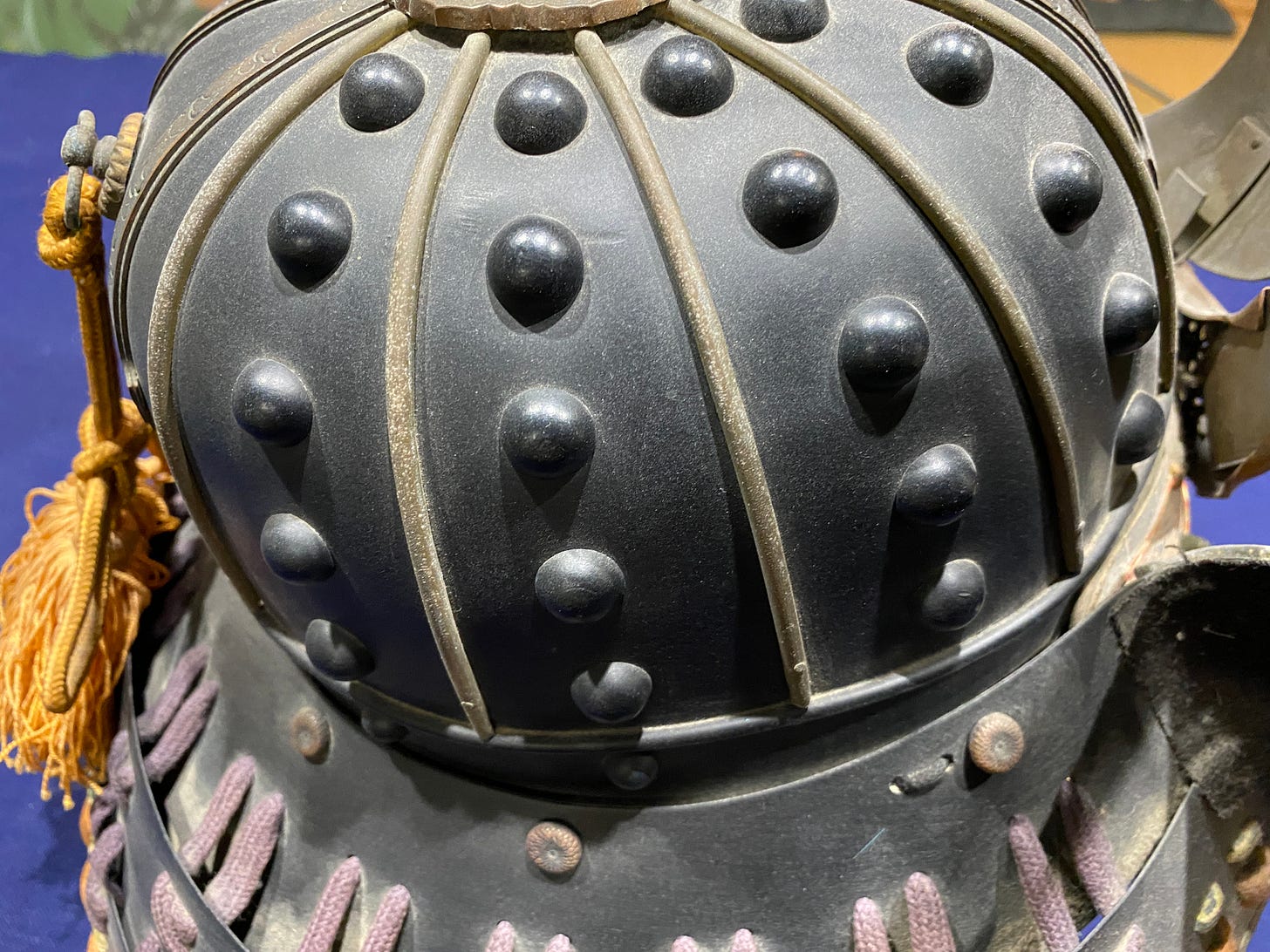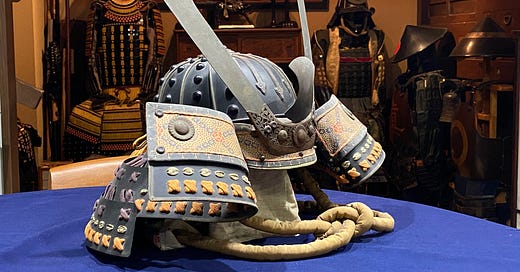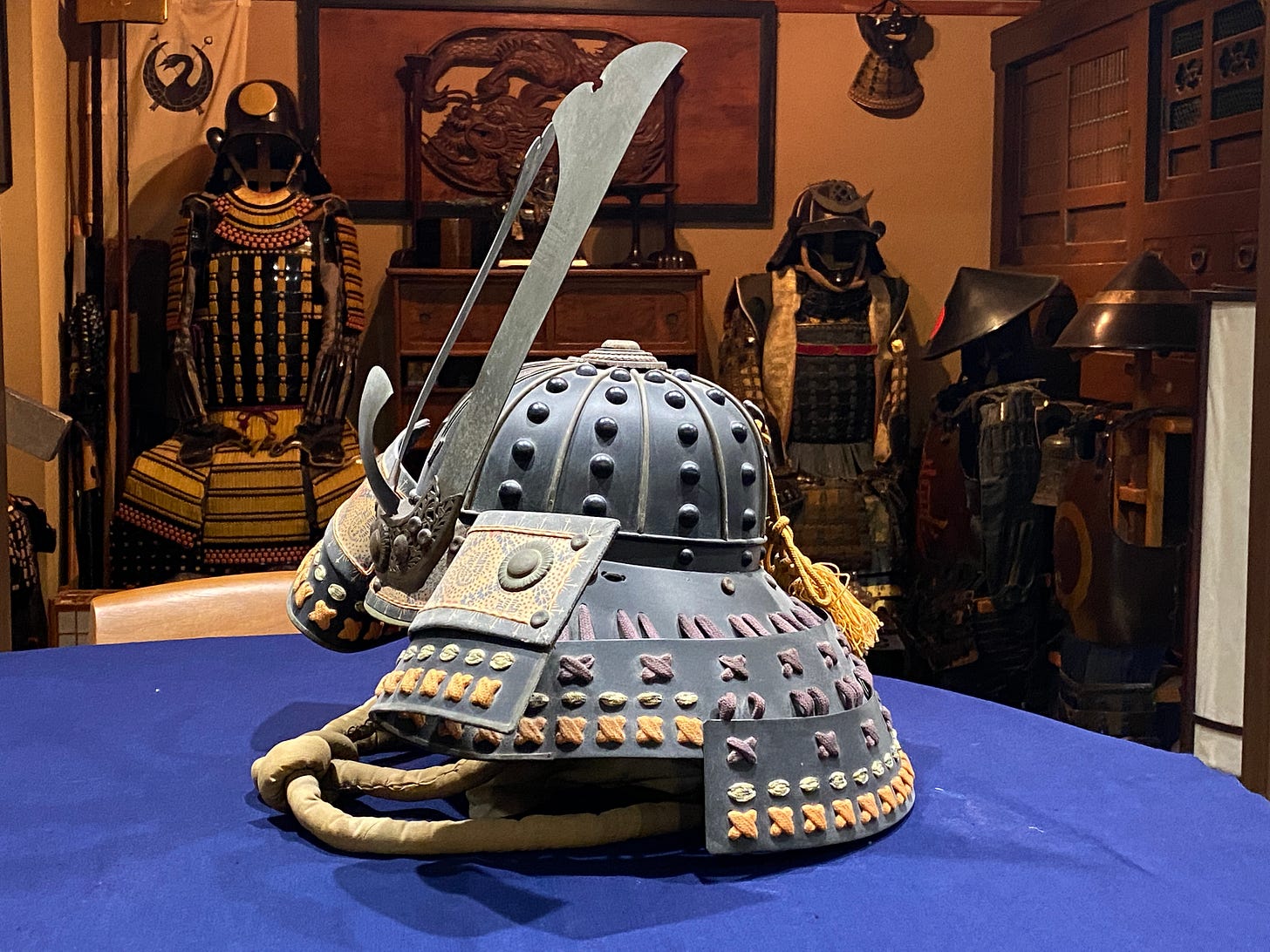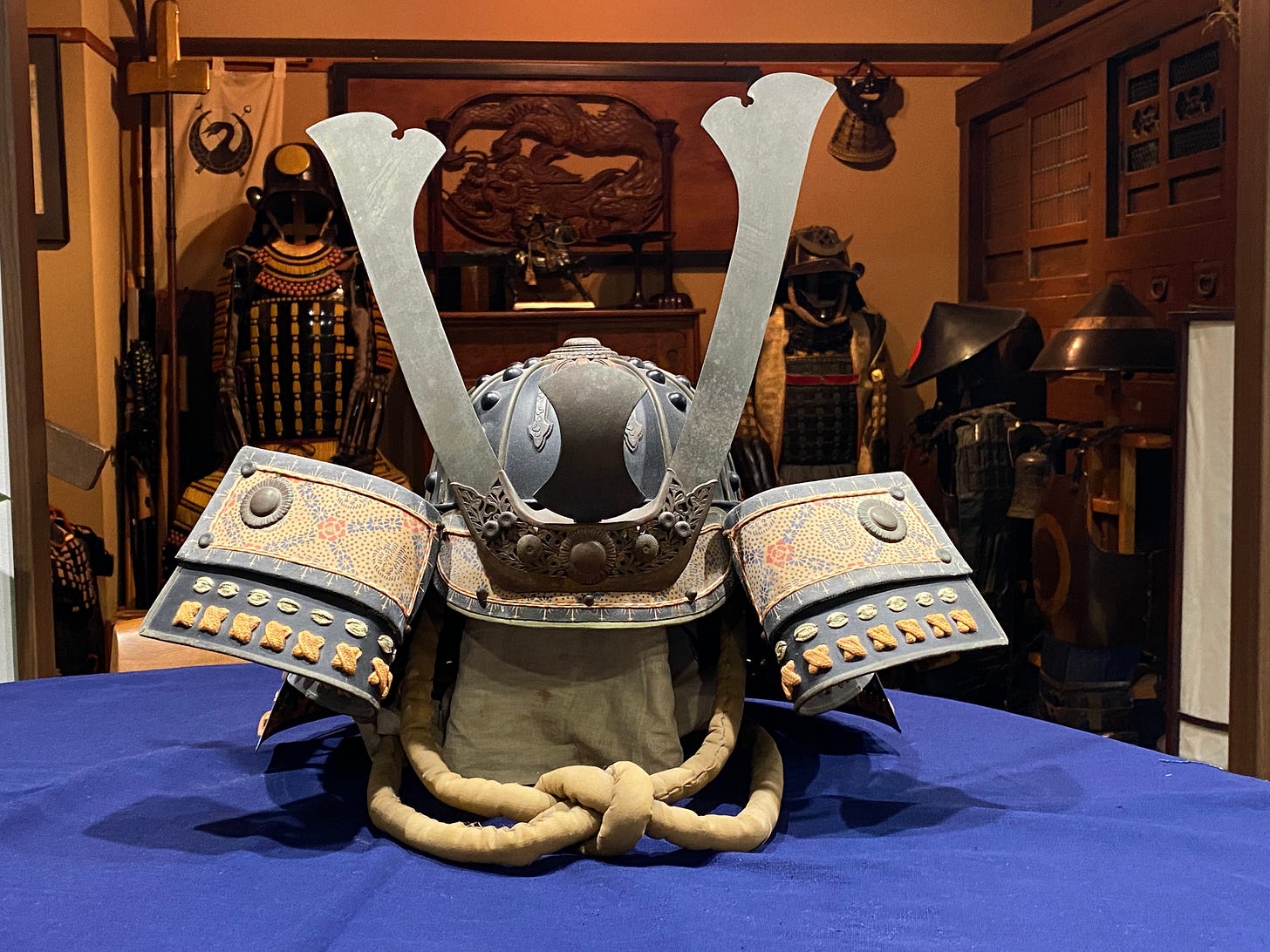Los Angeles baseball team, the Angels’ Home Run Cowboy Hat has been replaced by a Samurai Warrior Home Run Helmet introduced by star pitcher and batter, Shohei Ohtani.
The former Hokkaido Nippon Ham Fighters Japanese baseball star and currently Los Angeles Angels’ elite batter and pitcher has been gaining attention for his on-field talents, his continuous home runs and strike out pitching, and now for his introduction of the team’s new Home Run Headwear. Shohei Ohtani purchased the kabuto in question from Japanese armor manufacturer, Marutake Sangyo.

The Kagoshima based Marutake Sangyo company have been creating samurai armor since 1958. Their main line of business is the production of a diverse range of wearable samurai armor from various periods for the use in TV dramas, movies, events and for display purposes. They produce a wide range of replica warrior armor for enthusiasts, festivals and museums, based loosely on extant examples of armor. The company’s products have been seen in countless Taiga Drama TV series and movies such as Kurosawa Akira’s 1979 hit, Kagemusha and the 1985 epic, Ran.
While Marutake Sangyo claim to produce some 90% of samurai TV and movie armor and props, and offers around 20 armors of the more famous warriors, and some 45 generic sets of armor, they are not always 100% historically correct. The company itself makes no claims to this being authentic samurai armor, nor it having any defensive qualities. The steel is much thinner and lighter than real samurai armor, the “lacquer” is thinly spray painted on, the chain mail links are larger and simpler, the numbers of parts are often reduced for simplicity and cost reduction. A good example is the dou, the main cuirass, which often has less than historically accurate lame numbers in its construction. Other historical inaccuracies include the incorrect type of kote, armored sleeves, for the Sengoku period armors, and the incorrect numbers of kusazuri, the plates that hang below the dou to protect the upper thighs.
Despite the inaccuracies, on the whole Marutake Sangyo products are by far better quality, and more authentic than the CNN (Cheap’N’ Nasty) Chinese knock offs being touted to the unsuspecting public. The very first piece of samurai armor I purchased was a kabuto helmet I found in an antiques store in Sapporo in 1985. From early 1994 I was apprenticed to traditional samurai armor craftsman Atsuta Shindo, studying the production and preservation of particularly Sengoku (Warring States) period armor, and from that time realized that what I had bought nearly ten years earlier was a Marutake Sangyo produced helmet, of a similar style to what Ohtani San has bought.
The kabuto in question is of a style long made by Marutake Sangyo, known as a suji kabuto, of the late Kamakura period style, (circa early to mid-14th century) by which time the ear or wing-like fukigaeshi either side of the helmet had become smaller, and the shinobi-no-o, the helmet cord came to be anchored at three points within the bowl.
Suji-kabuto are helmets made of multiple triangular splints or lames of steel hammered into a quarter circle shape that is then riveted together with other splints to form a bowl-like crown, or bachi. Often the edges of these triangular plates stand at 900 adding greater strength and forming ribs, or suji, along the plate edges. Below the bachi, or helmet bowl is the koshi-no-ita, a long base plate holding the bowl in place, and from which the multi plated shikoro, or neck guard is suspended.
Of note are the rivets used to connect the triangular splints to form the bowl. Some helmets used a flat headed type which were countersunk or hidden under urushi lacquering. Older helmets used a large, prominent dome headed type of rivet known as a hoshi. However, one major fault with such replicas is that the domed head rivets, the hoshi, are fitted in the center of each triangular splint, instead of along the edges where the splints are supposed to be joined.
This helmet also features a tehen-no-za, also known as tehen kanamono, being decorative metal fittings around the tehen, the hole at the top where the triangular lames forming the bachi meet.

The prominent horn like devices are known as kuwagata, as they resemble the mandibles of the stag beetle. Made of thin sheets of copper, they serve no purpose other than to be intimidating. Use of Kuwagata fell from popularity in the mid 1500’s, but were revived in the mid to late Edo period when older, classical style samurai armour and helmets made a fashion recovery. Between these, Ohtani’s helmet sports a maedate crest device of a pouncing shishi lion-dog, a legendary creature often seen in statue form guarding the gates to shrine entrances. On the back of the helmet bowl is the kasajirushitsuke-no-kan, a small ring with a decorative cord tied in a fancy bow. The ring was for attaching identification tags, often with the name of the samurai written on it, so that if he lost his head in battle, the victor would know whose head he had taken.
When Ohtani San first brought out the helmet, I was surprised! How wonderful it is to see a Japanese player doing so well on the international stage, and feeling confident enough in his country’s history and culture to introduce the kabuto helmet — a symbol of the samurai — to his team mates and the world, and for his team mates to openly accept a part of samurai history and culture!






👍